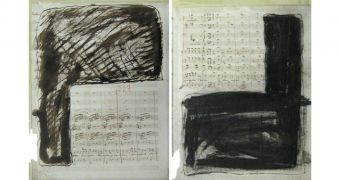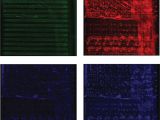An aria written by composer Luigi Cherubini 200 years ago and lost to history has finally been recovered thanks to science.
In particular, thanks to scientists at Stanford using the Stanford Linear Accelerator Centre (SLAC) National Accelerator Laboratory to peek behind a large blacked-out portion of the original music notes.
Apparently, critics at the time complained that the opera that contains the aria, Médée, ran too long, so the composer removed an entire area from it. Ever since, his most famous opera has been performed without that area.
But scientists used X-rays to literally paint a picture of what's behind the charcoal smudges. To do this, they relied on what they knew about the inks of the time when the opera was written.
The musical notations were written with an ink rich in iron. The pre-printed staff was rich in zinc. By bombarding the manuscript with high-energy particles, and noting where one hit an iron or zinc atom, scientists were able to reconstruct the original manuscript.

 14 DAY TRIAL //
14 DAY TRIAL // 
